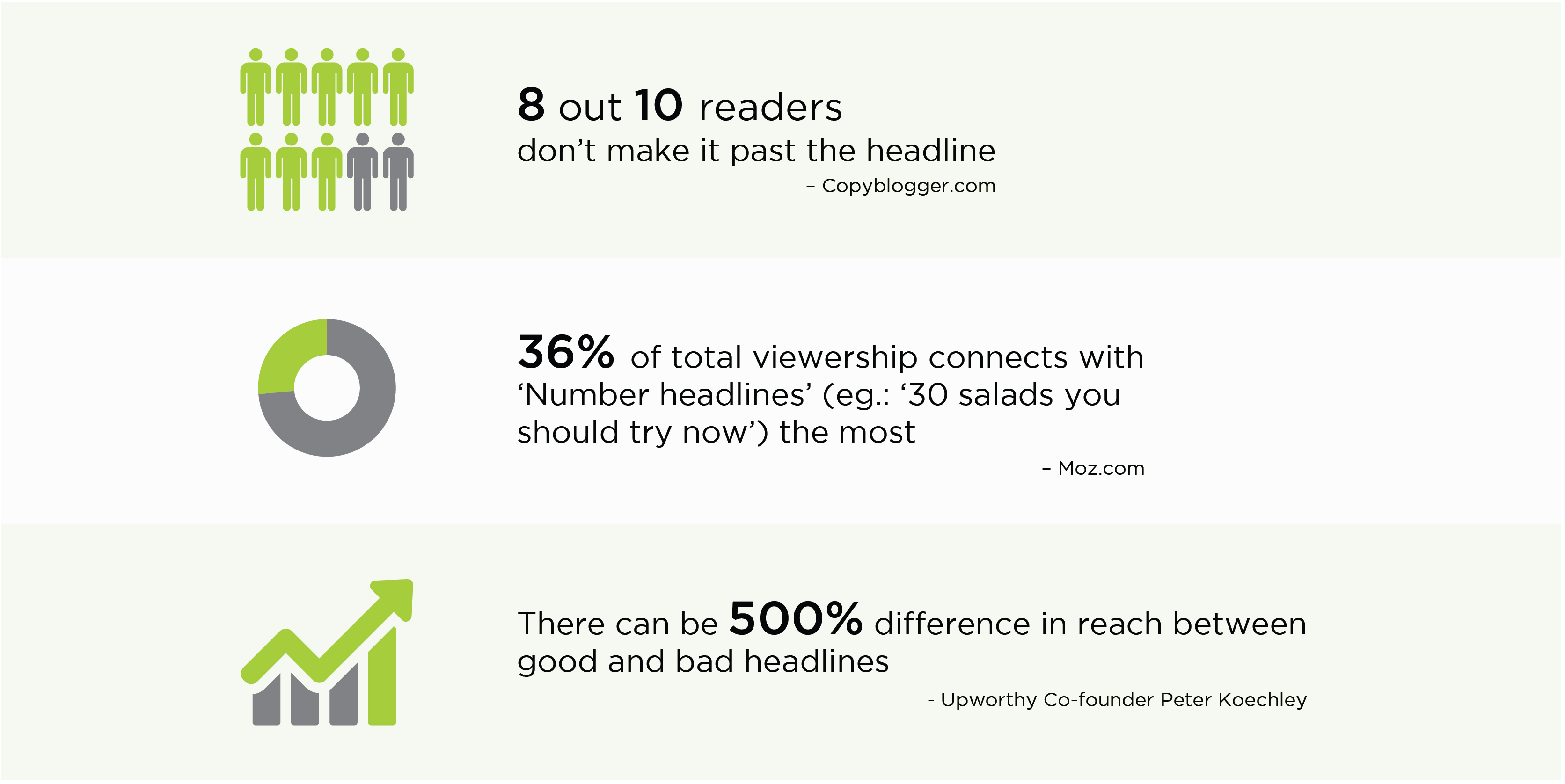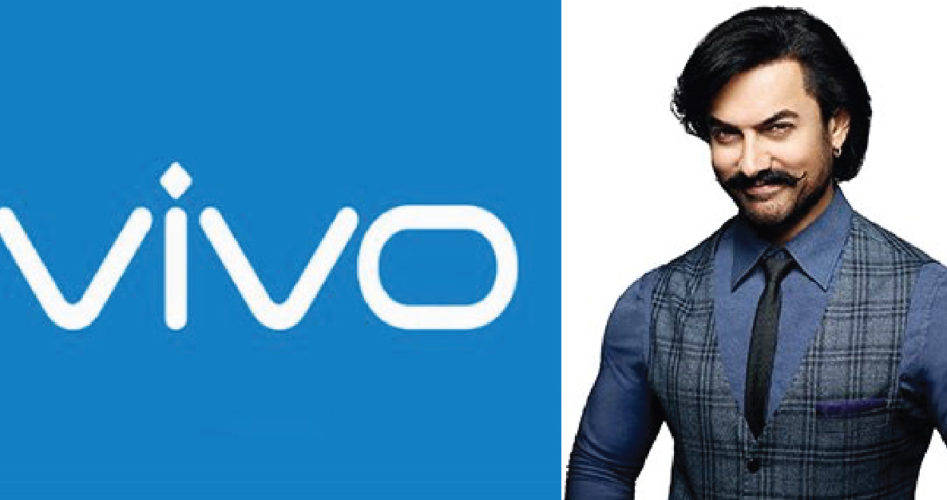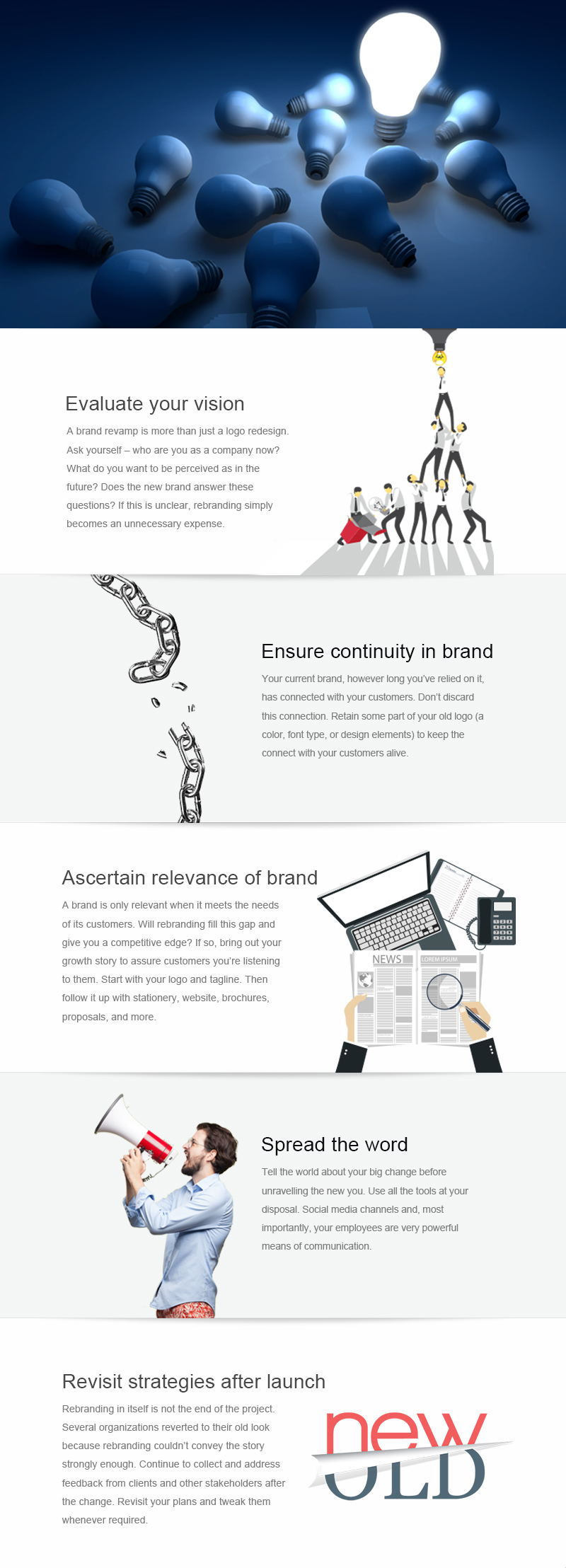http://www.afaqs.com/news/story/49813_Discovery-launches-sports-channel-DSPORT
Internal communication is to an organization what sandwiches are to Joey Tribbiani — absolutely essential! While utmost importance is given to smooth communication between a business and its clients, equal weightage must be given to communication within the organization as well. Clear, concise, and quick delivery of messages to the intended audience is the backbone of any successful organization, big or small. For example, a company implements a new leave policy, but fails to communicate the same clearly to its employees, can you imagine the chaos? A solid internal communication strategy is crucial in preventing such misunderstandings. It also makes sure that:

Every organization has different departments that take care of various aspects of their work. However, they are all part of a cohesive whole, working towards the organization’s objectives. For this to translate, the role of each department must be clarified. Once their duties have been communicated to them internally, each department realizes it’s role in the cohesive whole. Activities like forming a book club allow all employees to express themselves creatively, making it a fun team-building exercise.

Picture this: you just got a new job. You’re excited about what you can learn and achieve. You start working, only to realize you don’t know what exactly you’re supposed to be doing. No one’s guiding you or holding you accountable for your work. You’re bound to feel low, right? You’ll feel like no one gives your role importance — instantly, your morale plummets. Efficient internal communication prevents just this — it makes sure your employees know what they’re doing, and how they’re contributing, which in turn keeps their spirits high and increases productivity.

How many times have you called a help desk, only to find that the executive on the line doesn’t have the answer to your query? Too many times to count, surely. Clear communication that reaches all levels of an organization ensures that everyone — from the CEO to the customer service executive — can answer every query, no matter how small. Thus, efficient internal communication equals happy, loyal customers and clients!
Having an effective internal communications strategy can make or break your organization. But, planning this strategy can be a challenge — which is why we bring you six simple steps you can follow:

Do you find that often some of your employees are unaware of policy changes or directives? This could be something as basic as toilet etiquette or a change in appraisal policies. If yes, then you’re doing something wrong. Ask yourself: what are you saying, and to whom? Are you implementing a top-down strategy? This could turn the delivery of messages into a game of Chinese Whispers — perhaps it’s time to change. How you’re delivering the message is important. Are your messages full of jargons, or words not everyone would be able to understand? Take an objective, hard look at your strategy, and work from there.

Set Goals. While planning a strategy, ask yourself: why am I doing this? What should this strategy achieve? Are you only looking to fix existing issues or does your communication strategy have a larger goal? Are you looking to increase productivity? Raise employee morale? Answer these questions and you’re well on your way to building a strategy that others would want to follow. Ensure your goals are measurable and attainable, then move on to the next step.

Not every message needs to go to every department in the organization. For example, changes in hiring policy can only be communicated to the senior management. However, changes in HR policies or the creation of a sexual harassment committee must be communicated to all the employees. So, figure out what you need to say and to whom. For messages that need to be disseminated organization-wide, make sure it’s made understandable to each employee, from top to bottom.

Following from this, determine your best channel
Don’t assume every employee has access to, say, email, at all times. Take for example an NGO engaged in fieldwork. If there’s an urgent message that needs to go out to the field workers, how would you do it? Shooting an email or a Facebook message is probably not an option. Plan ahead for such possibilities. Identify what works best for your organization. If it’s an organization with several hundred employees, common platforms like Yammer or Hipchat might be best. For small organizations with say 50 or less employees, emails and WhatsApp may be the most convenient option. Understand the scale and functions of your workplace, and then decide on the communication channels accordingly.

You’ve identified problems, your audience, and your preferred channels. Now, to the most obvious — don’t complicate things. You’re not writing a literature assignment that requires flowery language, so use simple words, ensure your spellings are correct, and keep your messages short. No one has time to read an email that goes on and on for pages, or even paragraphs. Steer clear of language that is overly casual or extremely complex — it’s about striking that fine balance. Hold workshops and short trainings on effective communication, and it’ll be worth it in the long run.

You now have a new plan in place, but the work doesn’t stop here. You need to make sure your plan is compatible with the changing needs of your organization. Create an assessment outline. Every year, year and a half, revisit your communication strategy, base your assessment on predefined metrics. Has your organization expanded greatly over a couple of years? Have departments been added or eliminated? Might be time to rework your internal communication plan accordingly.
According to research conducted by Mckinsey Global Institute, productivity increases by 20-25% in organizations with connected employees. So there you have it — internal communication is like the proverbial apple a day. It’s good for your organization’s overall health! Happy employees equal happy clients — invest in an effective internal communication strategy today. Your employees will thank you for it.
If you’re fishing for readers, a great headline is the best tool at your disposal. Headlines (along with preview images) are the first indicator of your content that readers see online. And if your headline doesn’t pique curiosity, your blog or article will simply get lost amongst the millions of others like it on the internet.
To protect your content from such an unfortunate fate, here’s our guide to truly killer headlines – why they’re important, and how you can craft them for your content.
The Attention Span Problem
According to a 2015 study by Microsoft Corp., readers online lose interest after eight seconds – an attention span shorter than that of a goldfish! That’s an insanely small amount of time for your article to attract the audience’s attention. However, if your headline conveys the meaning of your content perfectly, it can sidestep this problem and make viewers click on your link.

And Now, for our Hot Headline Tips!
Here are some guidelines that will make your headline a beacon for clicks (and shares!)
Clarity: Don’t complicate your headline for the sake of cleverness. Make sure that it communicates your content’s meaning and purpose in a clear, simple line.
Example: PM visits Chandigarh for Make in India Seminar
Engagement: Readers don’t like dry, matter-of-fact language – rather, they prefer content that’s engaging and stimulating. Your headline should invite them to read your content and also chip in with their own opinions. Headlines written in first person typically do this best.
Example: 5 Ways to Build your Business with your Smartphone Camera
Crisp language: Remember that attention span problem we talked about? You can’t afford to use extra words that will go over your reader’s head. Frame your headline using as few words as possible.
Example: 7 Social Media Tips for your Business
Accurate facts: Unfortunately, these are harder to come by in today’s age of clickbait. However, a factually correct headline is still very effective, and leaves no room for ambiguity. Frame your headlines using the right information, and your audience will appreciate you for it.
Example: AAP Leader Demands Info on Pak Surgical Strikes
Some Savvy Stats That Say it All
If you want to know just how much difference crisp headlines can make, here are some handy statistics:

The first impression is the last impression – this holds true especially for your headlines. Don’t let it be an afterthought – frame, sharpen and hone your headline to give your article the best shot at popularity!
Or better yet, partner with a creative communications agency that will optimize your content, headlines and all!
Content marketing is a lot like George Orwell’s 1984. Most claim to know it but in reality, they’ve only glanced at the cover. More often than not, the term content marketing has been used flippantly with little to no knowledge of what it actually is.
Before we get down to the nitty-gritties of what content marketing can do for your business, let’s break down this seemingly simple concept – step-by-step.
Step #1: Define Content Marketing
The definition of content marketing goes beyond ‘marketing content’. In fact, it doesn’t have just one definition! The simplest one is this – content marketing is a dedicated marketing program that includes creating, publishing, and distributing content to create an online presence.
Step #2: Understand Why it Matters
The goal of content marketing is also simple – to get attention, and more importantly, to retain it!
Many organizations today use marketing programs like PPC or list purchasing to find their target audience in minutes. A method like PPC is simple – all you have to do is post your ads on Google and pay every time a user clicks on it. Admittedly, such methods offer quick results but they’re not the most economical, scalable, or effective route.
As long as you’re funneling money into purchasing more lists or investing in PPC, everything seems fine. But once the money stops, so do the results. Where methods like these fail, content marketing triumphs.
Let’s say you’ve written a blog about your service with a helpful link. Considering a minimal 2% rate of visitor-to-lead conversion, you would find two promising leads every 100 views. But unlike PPC or list purchasing, you don’t have to keep writing the same blog repeatedly. This single blog post will continue to generate leads again, and again, and again.
Content marketing is like the gift that keeps on giving, making it economically viable and strategically smart!

Step #3: Assemble the Right Team
Even with the most basic strategy in place, content marketing needs manpower. The size of your content team depends on many factors such as the size of your organization and budget. So how do you create a plan based on the size of your team? Here’s how:
- Team of 1 (Startups)
If you’re a solo entrepreneur or running a startup, your marketing team most likely comprises a single person – you. Your responsibilities include creating content, managing social media platforms, and optimizing SEO. Focus most of your time on creating content – be it blogs, long-form, video etc. When you gain traction with your content, shift your attention to SEO and social media.
- Team of 3 (SMEs)
If your business is enjoying steady success, your marketing team may involve a small team of 3-4 people. You can either assign one marketer to handle every aspect of content marketing while the other two handle conversion and closing; or you can leave the core content marketing tasks to two marketers and let the third manage the rest.
- Team of 9 or 10 (Mid-size business)
With a larger team, you might be tempted to expand your efforts into converting more leads. However, your best plan of action is still to focus on pushing out content that sustains your strategy. In a team of about 9-10 people, at least half the team should be dedicated to content creation i.e. two for blog writing, one for long-form content, one for SEO, and one for design. With a group this size, it is smart to appoint a CMO who manages everyday activities of the team.
- Team of 20 and above (Large enterprise)
If your organization has a marketing team of over 18 people, kudos! Chances are you have a sizeable budget dedicated to content marketing alone. A team this size includes SEO experts, designers, blog writers, and long-form writers. To sustain quality, hire bloggers with extensive experience in proofreading and editing and create a position like Editor-in-Chief or Head of Content to support the CMO. Their responsibilities include streamlining reporting, securing budgets, hiring talent, contributing ideas, and strategizing for growth.
Step #4: Arm Yourself with the Right Tools
A few basic tools used right can make all the difference in your content marketing endeavors. Here are some necessary tools you should have in your arsenal before you get started:
- Analytics: Measure your performance against your pre-determined goals
- CMS: Publish and manage your content easily, quickly, and effectively
- Design: Create different types of creatives for all visual content
- Project management: Manage projects across different campaigns and teams

Step #5: Create and Publish Content
You’ve got the strategy, you’ve got the team, and you’ve got the technology. What’s next? The actual work! [But before that make sure you are aware of commonly made content marketing mistakes which the first timers are more prone to.] If you’re not sure where to start, here’s a quick rundown:
Blogs
Your blog posts should improve your company’s presence in search rankings. You can achieve this by publishing relevant content with SEO optimization and keyword research. Depending on your industry, these are the types of blogs you can publish:
- How-to / Informative
- Thought leadership
- Listicles
- Slideshares
- Infographics
- News reports
Premium assets
Long-form content is usually more time-intensive but can be very rewarding when done right. Ideal for brand building and lead generation, premium assets can work wonders in promoting high-level content when tied in with regular blogs. These are the following types of premium assets:
- Research reports
- Webinars
- E-books
- Templates
- Tools
Visual content
It’s not enough to include text-based content in your strategy as visual media is gaining mainstream popularity. A healthy mix of blogs, long-form, and visual content can lend balance and variety to your content marketing strategy. Some popular examples of visual content include:
- Videos
- Slideshares
- Infographics

Step #6: Distribute your Content
Once you’re done with content creation, distribution is your next step. After all, you have to make sure that your voice reaches as many people as possible. But there are many who skip this step, and here’s why:
- After publishing the content, they leave the distribution to Google
- Most writers and designers are more focused on creating cool content than marketing it
Distribution deserves just as much attention and here’s how you can do it right:
- Search engines: Google might distribute your content for you, but if you don’t market it right, your content will end up on page 26. With the right SEO measures, you can bring it to page 1
- Social media: If Google considers social media to be important, so should you. Sharing your content on social media platforms will increase audience engagement
- PPC and ads: Targeted digital marketing can help boost your SEO and drive traffic to your website
- E-mail: A smart and simple way to drive traffic and improve conversions, email marketing is a great way to publicize and distribute your content
Regardless of the scenario, it is not enough to just publish the content – this is only one part of your job. Now that you’ve shared it, it’s time to reap the benefits!
Step #7: Analyze, Analyze, Analyze
Your strategies for content marketing remain unfulfilled if you don’t take the time to measure your progress. With these simple metrics, you can keep track of your content marketing and ensure that you’re reaching your goals.
- Site traffic: This metric gives you the number of hits your website received over a fixed time frame
- Leads: This metric directly influences revenue and can be used to maximize your conversion rate
- Social media: This asset is measured by the number of followers on each platform
- Blogs: This major website asset contributes to site traffic as it matures and grows at a steady rate
- Premium assets: This asset is measured by the number of leads it generates per offer
Success in content marketing isn’t quantifiable. But a surefire way to see results is to create scalable and flexible strategies that can be improved and scaled. Content marketing may not be an exact science but hey, experimentation is the best way to make new discoveries!
Among the scores of calcium supplements available in the market, the only one we all remember is Calcium Sandoz. When all others are forgotten, how does one brand stand out in the minds of its consumers, and create instant brand recall?
Let’s face it: making a lasting impression isn’t an easy job in a market that’s evolving at the speed of light. You need to be conscious that while you’re striving to keep your product up-to-date with the latest technologies, everyone else is too! So how can you stay one step ahead of your competitors? One quick trick to grab your customer’s attention is to present your product in a smarter and more interesting package.
Here’s how packaging can make or break your product:
Love at first sight
Yes, we agree that a product’s performance is undoubtedly its most important aspect. But it pays to be the smart seller whose packaging is a cut above the rest — differentiating it from all others sitting on the same store shelf. This applies equally to those selling old wine in a new bottle. Let’s talk about Park Avenue’s Beer Shampoo for a minute.

Almost every beer-lover (and even teetotaler) has noticed, and reached for this product at some point, because it stands apart in a sea of generic-looking shampoos. Needless to say that the beer bottle packaging worked wonders for the brand, creating a sensation that’ll be spoken about for a long time!
Target group above all
Taking the correct route to appeal to your target audience is key to selling your product successfully. Doing this has helped a lot of brands achieve astounding sales and make a long-lasting impact, even if their products were more expensive than their competitors’. For instance, remember Kinder Joy and the way we used to drool over it as kids? Well, that was chocolate maker Ferrero playing it smart. They knew that the egg-shaped, colorful package would appeal to their primary target audience — children. The moral of the story: understand your target group and more importantly what appeals to them.
Emotion trumps reason
When targeting one particular section of customers, you can choose to focus on sensitive messaging that addresses lingering concerns. This way, you are ensured top-of-mind recall. For instance, if you were to name baby shampoos, can you name five brands apart from Johnson & Johnson’s? Difficult, isn’t it? That’s because J&J is unlike any other brand — highlighting their tagline ‘No more tears’ through their packaging. This instantly conveys the essence of the brand and the product even to first-time users. Needless to say that the bottle also draws the attention of parents, immediately arousing their protective instincts. That’s why J&J appears at the top of most parents’ shopping lists!
Now that you have a fair idea of how to connect with your customers through product packaging, it’s important to take care of a couple of other things as well. Stay tuned for more insights on packaging and its role in building your product’s path to success.
By now, you have a fair idea of why smart packaging is essential for the success of your brand. While packaging is one of the key product differentiators, there’s more to the story!
Smart Highlights

Today’s busy generation hardly has any time to stop and read the label on a product. If you need to ensure your product doesn’t get lost on the shelves, it’s absolutely necessary to communicate your product’s USP through its packaging. Take Britannia’s Digestive Biscuit, for instance. While the name conveys one of its key USPs, the packaging has the words ‘Sugar-free’ highlighted right upfront. There’s no way this value prop can go unnoticed — especially when everyone (from youngsters to diabetic patients) is trying to avoid extra calories.
Stable Identity

Expectation is synonymous with responsibility. When a customer has grown up seeing your product in a particular container, color, and shape, rebranding can be a double-edged sword. The only trick here is to ease into the change very subtly yet steadily. For instance, if you are changing the messaging on your product at a particular point in time, maintaining coherence in color, shape, logo, and communication style is necessary to reassure your customers. After all, that’s the lesson we learnt from Tropicana’s terrible tale of 20% sales drop, after they drastically revamped their packaging.
Online Presentability

From groceries to vehicles — a majority of the urban population relies solely on online shopping for all their needs. That’s why every marketer needs to keep the digital generation in mind. It’s important to remember that touch or smell are things that cannot be gauged online. That is precisely why you need to add that ‘extra something’ when selling your product online. Maybelline, for example, packs their nail polish sets in small tote pouches when you buy them off an e-commerce website. These classy, mono-colored pouches, featuring the brand’s logo prominently, are not too high an investment for the brand but still manage to make a huge impact. After all, it’s these little details that let your customer know you care and make them more likely to value your brand.
Why risk getting lost in the crowd when adhering to these simple tactics will help you build a stronger consumer-brand relationship? And why not take packaging seriously when it can be an integral part of your marketing plan as well as advertising communications — especially when it is a low-risk, high-reward scenario! After all, by now we all have learnt that we can sell the same product much better with a whole-new packaging!
Unless you’ve been living under a rock, you would have used or at least heard of Snapchat – the social media app that lets you share messages, videos, or funny photos. Whether you’re an individual user or a brand, if you’re planning to get on Snapchat, now’s the best time to do it!
But before you do, there are a few basic ways this technology differs from anything you may have used before.
Let’s dive in:
Decoding The Lingo
Remember the hashtag, RT, and 140 from Twitter? Didn’t we all take our sweet time and several tutorials to understand how these things work? Similarly, the Snapchat universe has its own set of codes. Allow us to break them down for you:
- Snap: A snap is a picture or video that you can click and send to your friends. However, the USP of Snapchat lies in its disappearing act – a snap vanishes after a maximum of 10 seconds once viewed.
- Story: A series of photos or videos make up a Story. This allows you to showcase a sequence of events to your friends list.
- Filter: Filters are overlays that can jazz up your photos. These can change basis the time of the day, your location, or a special event.
- Lenses: Lenses help you make those funny faces (think: the bunny rabbit or the angel-styled halo of flowers). They allow you to add animated effects while taking photos.
- Geofilters: These are fun, pre-designed overlays used to display your current location.
- Snapcode: A seemingly random collection of black dots makes up your QR code, which enables discoverability. This is what appears when someone clicks on your profile image.
- Snapchat Score: Your Snapchat Score is a special equation based on the number of snaps sent and received, Stories you’ve posted, and other activity.
- Memories: A new feature that automatically backs up your snaps and arranges them in categories. Use this searchable archive to keep Memories private or share them with your network.
Let The Action Begin
- Create Snaps: This is where the fun begins. Tapping the circle at the bottom takes a photo and by holding it, you can take a video. The icons on the interface let you add a funky filter, text, or a sticker. You can then doodle on your images, download them to your gallery, set time, and send to a friend. Remember, your friends can take a screenshot of your snap. The moment they do it, you get notified.
- Create Stories: Add the snaps you have created to make up a Story. Unlike Snaps, Stories have a time frame of 24 hours, during which they can be repeatedly viewed.
- Chat: As the name suggests, Snapchat is a messaging app at its heart. However, upon exiting a chat, the app immediately clears your messages.
Snapchat for Business: 5 Hacks To Build Your Brand On The Network
A relatively young, shy kid on the block, Snapchat is a growing network that promises to provide brands new opportunities to broadcast their stories. Many brands have mastered other social media platforms such as Facebook, Twitter and Instagram, but are still finding their feet on Snapchat. Here are a few ways your company can mark its presence on the network that has 150 million daily active users!
- Be Personal: It’s important not to seem like you’re advertising your wares on Snapchat, so we’d recommend not posting banner ad-like updates. Tailor your snaps to appear personal and spontaneous.
- Measure As You Go Along: The most basic stats that you can get from Snapchat are the number of views and screenshots. Other performance indicators include views for every frame and drop-offs at every Snap. Choose any parameter to judge your brand’s performance.
- Be Creative: Snapchat is a great network to show off the culture of your brand through creative ideas. Showcase your brand essence by posting behind-the-scenes videos, team events, or special occasions at the office.
- Mix It Up For Variety: The filters, lenses, doodling, and text features are out there for a reason. Don’t restrict your Snaps to just photos. Show variety by including short videos, pictures with emojis, doodles and so on.
- Build A Community: The best way to succeed on Snapchat is by creating a community around your brand. Grow your audience and turn them into brand loyalists by creating great content. Here’s how:
- Create weekly calendars and themes: #blowawaymondayblues etc.
- Get influencers on board: Are you a sports brand? How about making a story with a local athlete?
- Be heard: Make stories or snaps that portray your opinions about current affairs.
Snapchat, if used correctly, can prove to be a very powerful tool in your social media strategy. With these tips and tricks, all you need is a few days of fiddling around with the app, and you’re on your way to creating a splash among your followers!









